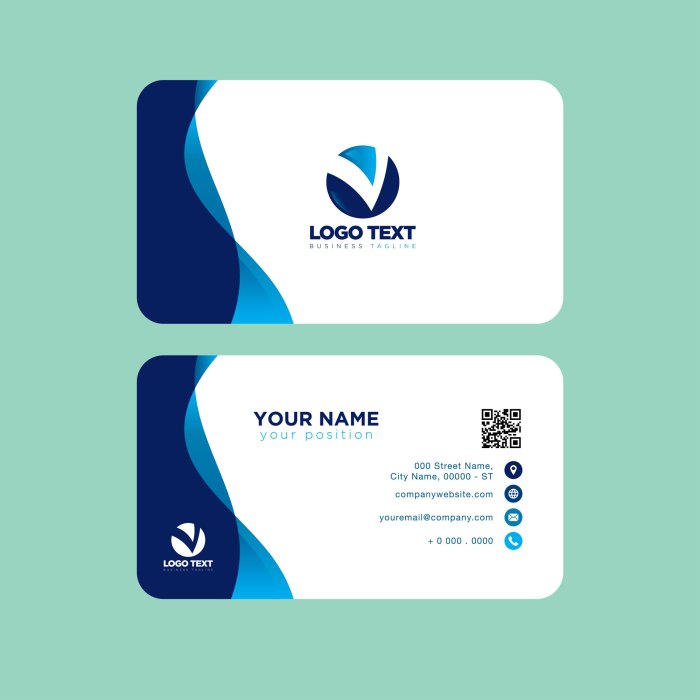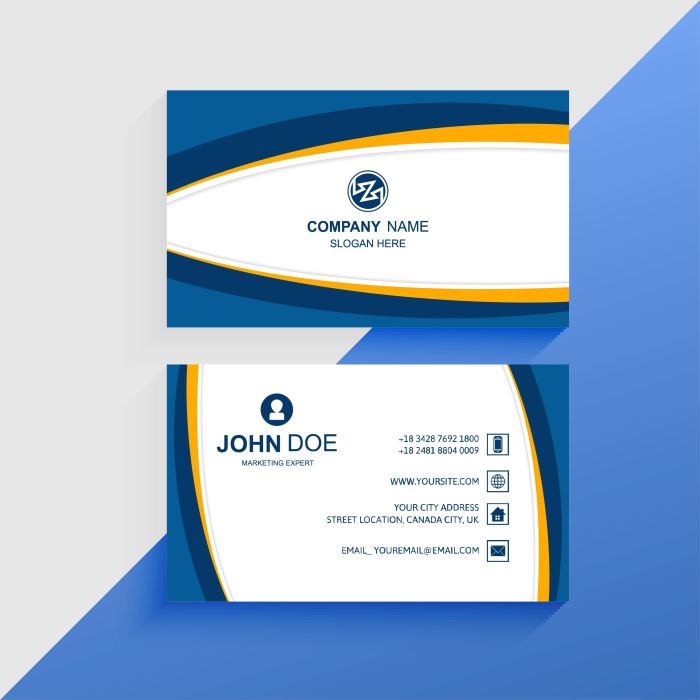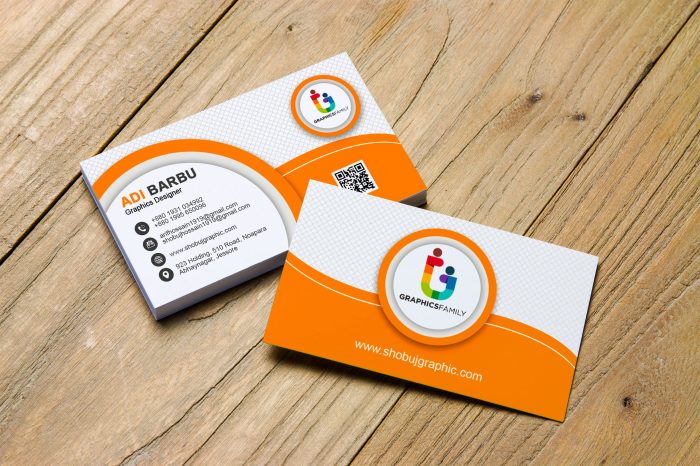Crafting the Perfect Visiting Card Design: A Comprehensive Guide
Embark on a journey into the world of visiting card design, where every detail plays a pivotal role in making a lasting impact. From the importance of a well-designed card to the latest trends in the industry, this guide covers it all to help you create a design that truly stands out.
Delve deeper into the realm of visiting card design with this comprehensive guide that explores the intricate balance between creativity and professionalism, offering invaluable insights along the way.
Importance of Visiting Card Design

Visiting card design plays a crucial role in making a strong first impression on potential clients and business partners. A well-designed visiting card can communicate professionalism, creativity, and attention to detail, setting the tone for future interactions.
Significance of a Good Design
A good design can leave a lasting impression on clients by showcasing the brand's personality and values. It can help differentiate a business from its competitors and make it more memorable in the minds of recipients.
Role of Design Elements
Design elements such as color, typography, logo placement, and overall layout play a vital role in reflecting a brand's identity. Consistent use of these elements across all marketing materials, including visiting cards, helps reinforce brand recognition and build trust with customers.
Elements of an Effective Visiting Card Design

Effective visiting card design is crucial for making a lasting impression on potential clients or contacts. It should not only convey necessary information but also reflect the professionalism and creativity of the individual or business it represents.
Key Elements to Include:
- Company Logo: A prominently displayed logo helps in brand recognition and establishes credibility.
- Contact Information: Include essential details like name, title, phone number, email, and website.
- Whitespace: Proper use of whitespace makes the card visually appealing and easy to read.
- QR Code: Adding a QR code can provide quick access to additional information or online resources.
Importance of Typography, Color, and Layout:
Typography, color, and layout play a significant role in shaping the overall look and feel of a visiting card design. The right combination can enhance readability, create visual interest, and reinforce brand identity.
- Typography: Choosing the right font style, size, and alignment is crucial for legibility and brand consistency.
- Color: Color psychology can influence perception and evoke emotions, so selecting a color scheme that aligns with the brand's message is essential.
- Layout: A well-organized layout ensures that information is presented logically and attracts attention to key details.
Striking a Balance Between Creativity and Professionalism:
Finding the right balance between creativity and professionalism is key to designing a visiting card that stands out while maintaining a professional appearance.
- Keep It Simple: Avoid clutter and excessive design elements that can overwhelm the card.
- Consistent Branding: Ensure that the design elements align with the overall brand identity for a cohesive look.
- Unique Touches: Add subtle creative elements that reflect the individuality or uniqueness of the business without compromising professionalism.
Trends in Visiting Card Design
Visiting card design trends are constantly evolving as designers experiment with new ideas and technologies. Let's explore some of the current trends in the industry.
Innovative Design Approaches
Designers are now incorporating unique elements such as embossing, foil stamping, and die-cutting to create visually appealing visiting cards that stand out. These techniques add a tactile dimension to the cards, making them more memorable and impressive.
- Embossing: Raised patterns or text are created on the card surface, adding a touch of elegance and sophistication.
- Foil Stamping: Metallic foils are used to highlight specific design elements, giving the card a luxurious look.
- Die-Cutting: Intricate shapes and patterns are cut out of the card, creating a distinctive visual impact.
Traditional vs. Modern Styles
While traditional visiting card designs often feature intricate patterns, elaborate fonts, and detailed graphics, modern trends lean towards minimalism and simplicity. Clean layouts, bold typography, and negative space are key elements of contemporary visiting card design.
- Traditional Designs: Rich colors, ornate borders, and intricate illustrations are characteristic of traditional visiting cards, reflecting a sense of heritage and sophistication.
- Modern Styles: Minimalist designs focus on essential information, using clean lines, subtle colors, and simple typography to create a sleek and professional look.
Tips for Creating an Impactful Visiting Card Design

When it comes to designing a visiting card that leaves a lasting impression, there are several key tips to keep in mind. From choosing the right paper quality to incorporating visually appealing elements, every detail matters in creating a memorable card.
Choosing the Right Paper Quality
In the world of visiting card design, the paper quality plays a crucial role in making a strong first impression. Opt for a paper that is not only durable but also reflects the professionalism of your brand. A thick, high-quality paper stock can convey a sense of luxury and attention to detail.
Additionally, consider finishes like matte or glossy to enhance the overall look and feel of your card.
Best Practices for Designing a Visually Appealing Card
Keep it simple
Avoid cluttering your card with excessive information or design elements. A clean and minimalist layout can make your card more visually appealing and easier to read.
Use high-resolution images
If you decide to include images on your card, make sure they are high-quality and relevant to your brand. Blurry or pixelated images can detract from the overall professionalism of your card.
Choose a cohesive color scheme
Selecting a color palette that aligns with your brand identity can help create a cohesive and visually pleasing design. Stick to a few complementary colors to maintain a clean and polished look.
Incorporate your logo
Your logo is a key element of your brand identity, so be sure to prominently feature it on your card. Make sure it is placed strategically and is easily recognizable.
Consider typography
The font you choose can greatly impact the overall look of your card. Select a font that is easy to read and aligns with your brand’s aesthetic. Avoid using too many different fonts, as this can create a cluttered appearance.
Last Point
In conclusion, mastering the art of visiting card design is not just about aesthetics but also about making a statement. Let your creativity shine through while keeping the essence of your brand intact, ensuring that your visiting card leaves a lasting impression on all who receive it.
Key Questions Answered
What role does typography play in visiting card design?
Typography is crucial as it conveys the tone and personality of your brand. Choosing the right font can make your card more memorable and impactful.
How important is paper quality in a visiting card design?
Paper quality is essential as it reflects the professionalism of your brand. Opting for high-quality paper can enhance the overall look and feel of your card.
What are some common mistakes to avoid in visiting card design?
Avoid cluttering your card with excessive information, using illegible fonts, or neglecting the importance of whitespace. Keep the design clean and concise for maximum impact.




